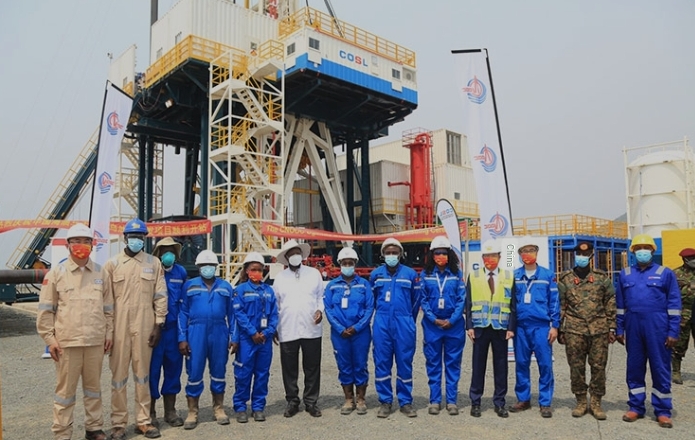Uganda is on course to produce its first barrel of oil by July 2026, marking a major breakthrough in the country’s journey toward becoming an oil-producing nation. The progress follows significant achievements at the Kingfisher Development Project in Kikuube District, where the minimum number of wells required for production has been successfully drilled.
According to John Bosco Habumugisha, Deputy Managing Director of the East African Crude Oil Pipeline (EACOP), 15 wells have been fully completed meeting the production threshold. “We are building a smart, sustainable, and hydropower-driven pipeline. By the second half of next year, Uganda should be ready for first oil,” Habumugisha announced.
The Kingfisher oil field, operated by the China National Offshore Oil Corporation (CNOOC), comprises 31 wells spread across four pads 20 for oil production and 11 for water injection, which helps maintain underground pressure and improve extraction efficiency.
Project geologist Dennis Mulondo confirmed that drilling has reached 16 wells so far, with 15 already cased and cemented a vital stage to guarantee the structural integrity of the wells. “All 13 producing wells have successfully struck oil. The team is ahead of schedule and confident of meeting production targets,” he said.
Mulondo added that while the production threshold has been achieved, the completion of major infrastructure including the refinery and EACOP pipeline remains essential before oil extraction can begin. “Government is prioritizing the refinery to ensure part of the crude benefits local industries before export,” he emphasized.
The project incorporates advanced environmental safeguards to minimize ecological disruption. Drilling is carried out in isolated zones, and all waste materials are sealed and transported to the HBP Waste Management Facility under the National Environment Company (NEC).
Initially powered by diesel generators consuming about 1,400 litres daily, the project has now switched to the national grid, cutting diesel use by nearly half. In addition, over 1,000 trees have been planted on 3.14 hectares to help offset carbon emissions, projected to absorb up to 20 tonnes of CO₂ within a decade.
At the heart of the project is the Central Processing Facility (CPF), where crude oil will be separated from water, gas, and sediments before export. Tonnie Dickson, the site’s piping engineer, confirmed that the CPF is now 93% complete.
The facility will include systems for crude treatment, LPG production and storage, water injection, power generation, and fire safety. Once operational, the processed oil will travel through a 48-kilometre feeder pipeline to Pump Station One in Kabale, where it will join the EACOP for export.
Mulondo concluded that production cannot start until all components are ready. “For now, keeping the oil underground is the safest and most economical way to store it,” he remarked.
If all goes according to plan, July 2026 will mark a historic moment , the dawn of Uganda’s oil era after nearly two decades of preparation.


